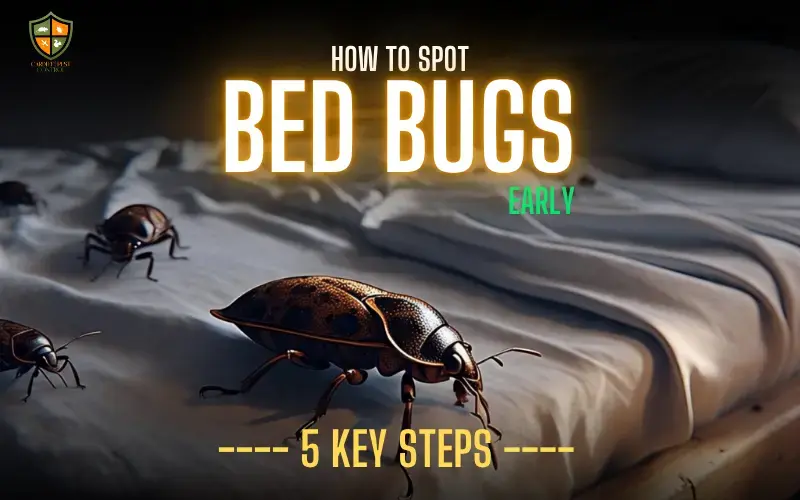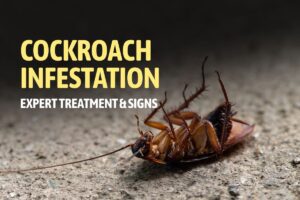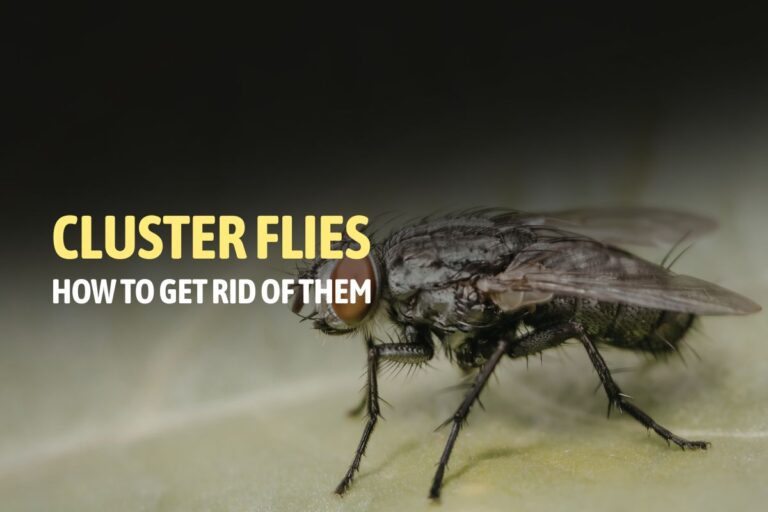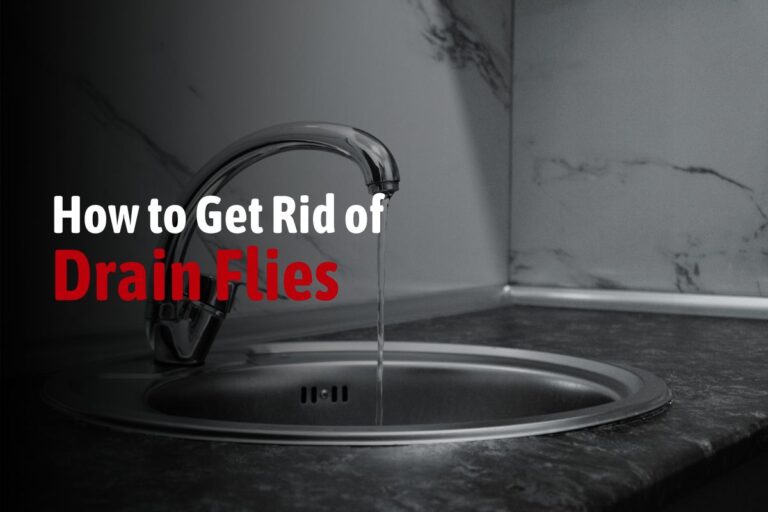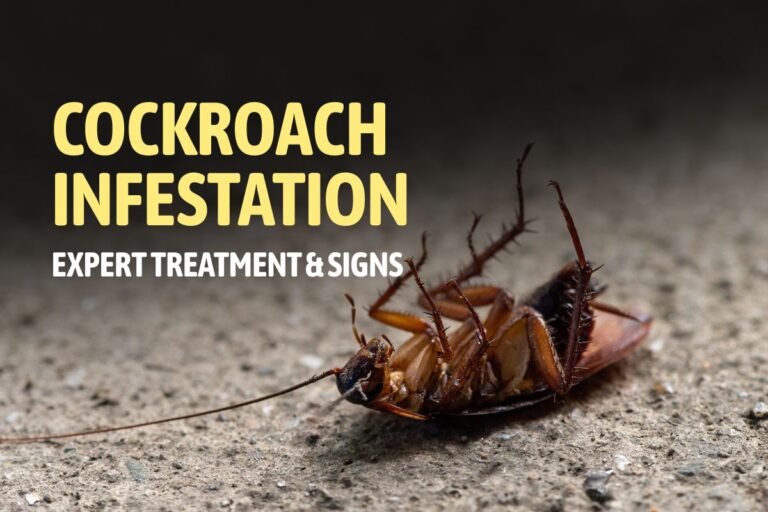Table of Contents
ToggleBed bugs can silently invade your home without you even noticing, and by the time you realize something’s wrong, they may have already caused a significant bed bug infestation. These tiny, elusive pests are notorious for hiding in cracks and crevices, making them difficult to detect until it’s too late. The good news is that spotting bed bugs early is possible, and it can save you from the stress, discomfort, and high costs associated with a full-blown infestation.
In this guide, we’ll help you understand how to spot bed bugs early by identifying five key signs. We’ll also discuss why early detection is crucial and provide tips on preventing bed bug infestations from taking hold in your home.
Why You Should Spot Bed Bugs Early
When it comes to bed bugs, the key to effective treatment is early detection. If you catch bed bugs before they spread throughout your home, you can save yourself a lot of hassle, discomfort, and money. Waiting until you’ve noticed significant signs of an infestation can lead to more extensive damage, both to your property and your health. By the time you realize your home is infested, bed bugs can be lurking in hidden spots, making treatment more difficult.
The risks of delayed detection are not just financial. Bed bug infestations can severely impact your health, causing allergic reactions and sleep disturbances. Additionally, bed bugs are known to spread quickly. This is why being proactive and spotting them early is critical. Early detection ensures you’re only dealing with a handful of bed bugs instead of a full-blown infestation that requires more extensive measures like fumigation.
5 Key Signs to Spot Bed Bugs Early
Here are five key signs that indicate you may have bed bugs hiding in your home:
1: Small Red Bites
One of the first things people notice when they have bed bugs is the presence of bed bug bites. These bites are typically small, red, and often appear in clusters or lines on the skin. Bed bugs tend to bite exposed areas of the body like the face, arms, and legs while you’re sleeping. The bites may cause itching or mild discomfort, and they often appear in the morning after a night’s rest.
The reason these bites are a sign of bed bugs and not other pests is that they typically occur in a specific pattern. While other insects bite randomly, bed bugs tend to bite in a linear or clustered pattern. If you wake up with unexplained bites that look like these, it may be time to investigate further.
2: Blood Stains on Bedding
If you’re spotting small, reddish stains on your sheets or mattress, it could be a sign that you have bed bugs. When bed bugs feed on your blood, they sometimes leave tiny blood stains behind as they crawl away after feeding. These bloodstains are often very small, so they can be easy to overlook, but they’re an important clue that bed bugs may be present in your home.
Check your bedding, especially near the edges of your mattress and pillows, where bed bugs like to hide. Finding these stains early is a strong indicator that you should investigate further and call a pest control professional if necessary.
3: Dark Spots (Bed Bug Feces)
Another way to detect bed bugs early is by looking for dark spots on your mattress, sheets, or furniture. These dark stains are typically bed bug feces and are a result of the blood that bed bugs consume. Their feces are small, round, and dark in color, and they can often be found on sheets, pillows, or near cracks and crevices in your bed frame.
If you notice these dark spots, it’s a clear sign that bed bugs are actively feeding in your home. Inspect areas where bed bugs are likely to hide, such as seams of the mattress, behind headboards, and in cracks and crevices around your bed or furniture.
4: Musty Odor
A musty, unpleasant odor can sometimes accompany a bed bug infestation. This scent is produced by the bed bugs’ scent glands and becomes more noticeable as the infestation grows. If you detect a strong musty odor in your bedroom or other sleeping areas, it’s time to investigate for bed bugs.
The odor is often described as being similar to the smell of damp or moldy clothes, and it becomes more intense if you have a large infestation. If the smell is strong, it’s likely that bed bugs are present in significant numbers and may require professional treatment.
5: Live or Shed Skin
As bed bugs mature, they molt or shed their skin. These shed skins are pale yellowish-brown in color and are often found in areas where bed bugs hide, such as seams of mattresses, behind furniture, or in cracks and crevices in the walls.
If you find these shed skins, it’s a strong indication that bed bugs have been active in the area for some time. Similarly, spotting live bed bugs is another clear sign. They are small, flat, oval-shaped insects, often around the size of an apple seed, and can be found in places like mattresses, furniture, and even behind baseboards or wall coverings.
How to Find Bed Bugs Early
Knowing how to find bed bugs early is essential in managing an infestation. Regularly inspect your bedding and furniture, especially if you experience any of the signs mentioned above. Here are some tips to help you detect bed bugs early:
- Use Bed Bug Interceptors: Place bed bug interceptors under the legs of your bed to catch any bed bugs that might be climbing up. These devices can help you monitor activity and catch early signs of an infestation.
- Look for Cracks and Crevices: Bed bugs love to hide in cracks and crevices, especially around your bed frame, furniture, and walls. Inspect these areas regularly.
- Check Your Luggage: If you travel often, always inspect your luggage for signs of bed bugs after returning home. Bed bugs can hitch a ride in your bags and infest your home.
Preventing Bed Bug Infestations
Once you’ve spotted the signs of bed bugs, it’s important to take immediate action to prevent them from spreading and causing a full-blown infestation. Here are some prevention tips:
- Seal Cracks and Crevices: Bed bugs can hide in tiny cracks and crevices. Seal up these spaces in your home to prevent bed bugs from entering or spreading.
- Use Mattress Protectors: Mattress encasements can help keep bed bugs from infesting your mattress and make it easier to spot them.
- Regular Cleaning: Vacuum your home regularly, especially in areas where bed bugs are likely to hide. Regular cleaning can help remove any bed bugs or eggs that may be present.
- Travel Cautiously: When traveling, always inspect your hotel room for signs of bed bugs. Avoid placing luggage directly on the bed, and use luggage racks if available.
Conclusion
Spotted a few bites or noticed some unusual stains on your sheets? These could be early signs of bed bugs, and it’s crucial to act fast. Early detection is key to stopping a potential infestation before it gets out of control. By being vigilant and aware of the common signs of bed bugs in your home, you can keep your home safe and free from these persistent pests.
If you suspect a bed bug infestation, don’t wait for the problem to worsen. Cardiff Pest Control offers professional bed bug detection and bed bug extermination services to help you get rid of bed bugs quickly and efficiently. Contact us today to schedule a comprehensive inspection and treatment.
FAQs
How do I know if I have bed bugs or another type of pest?
Bed bug bites often appear in a line or cluster and are accompanied by small blood stains or dark spots on your bedding. If you’re unsure, a pest control professional can help with bed bug detection.
Can I find bed bugs during the day?
Bed bugs are nocturnal, so they’re most active at night. However, you can still find them during the day in hidden spots like cracks in your bed frame or behind furniture.
What should I do if I spot bed bugs early?
If you suspect bed bugs, immediately limit their spread by cleaning and sealing cracks. Contact a professional pest control service to ensure effective bed bug treatment.
Are bed bug infestations dangerous?
Bed bug infestations are not typically a direct health risk, but their bites can cause itching, allergic reactions, and sleep disturbances. In large numbers, they can also cause significant stress.
How long does it take to get rid of bed bugs after spotting them early?
The timeline for bed bug extermination depends on the severity of the infestation. Early treatment usually leads to quicker results, but it can still take a few treatments to completely eliminate the problem.

